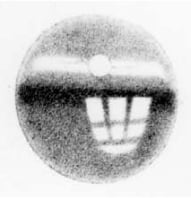![]()
Victorians would “develop” a murder victim’s retina like a photograph — believing that it would record the last image they saw of their killer.
In the late 1880s, there was a popular scientific belief that the human retina could record the last image that was seen by a dying person by locking it in photosensitive pigments.
In the Victorian era, forensic scientists erroneously believed that if they could develop a murder victim’s retina like a photograph, it would reveal the criminal behind their death.
According to a report by IFL Science, police even attempted this method on the victims of history’s most notorious serial killer — including Jack the Ripper.
The belief was so widespread in the 19th century that murderers even began destroying their victims’ eyeballs just in case.
Though the idea may seem far-fetched today, in the 1800s photography was a groundbreaking, new technology — and the similarities between the human eye and a camera fascinated people.
According to the American Academy Of Opthalmology, Victorians were aware that there is a lens in both the eye and a camera, and a camera aperture moves very similarly to a human iris. In an era of constant scientific discoveries, the notion that eyes might retain images didn’t seem implausible.
A History of Forensic Optography
The theory started when a 17th-century Jesuit priest named Christoph Scheiner said he’d spotted a faint image on the retina of a dissected frog.
Later, in 1876, Franz Christian Boll discovered rhodopsin (or “visual purple”) — a photosensitive pigment present in the rods of the retina.
Shortly after this, German physiologist Wilhelm Friedrich Kühne discovered that under ideal circumstances, the rhodopsin could be “fixed” like a photographic negative.
He began conducting experiments with rabbits and frogs in which he would expose them to bright images before killing them and taking out their eyeballs.
Kühne would then place the rear half of the eye in an alum solution to enable fixation of the bleached rhodopsin. He believed that this would help develop an “optogram” (an image on the retina of the eye) that would show what the animal had seen just before it died.

Compellingly, there was one optogram that showed the image of a barred window that the rabbit was looking at immediately before it died.
Kühne’s experiment was convincing evidence for the Victorians who eagerly embraced the notion that “optography” might serve as a forensic tool; capturing an image of the murderer’s face imprinted onto the eyes of the unfortunate victim. And experiments were carried out on the retinas of murder victims in the 1880s and 1890s.
According to medical historian Dr Lindsey Fitzharris, in 1888 it was even suggested an optogram should be produced from the eye of Mary Jane Kelly, one of Jack the Ripper’s victims.
In his memoirs, London police officer Walter Dew claims the procedure was attempted on Kelly. Jack the Ripper historian James Stewart-Gordon also believes that an optogram was attempted on victim Annie Chapman as well. In either case, it yielded no useful results.
Then over 25 years later in 1914, a U.S. grand jury admitted a forensic optogram as evidence in the case of the murder of 20-year-old Theresa Hollander, although the boyfriend suspected of her murder was found not guilty.
In late 1924, forensic optography was also admitted as evidence after German merchant Fritz Angerstein was charged with killing eight members of his family and household staff.
Doehne, a professor at the University of Cologne photographed the retinas of two of the victims, claiming to capture images of Angerstein’s face and the axe used in the gardener’s murder. Angerstein was tried, convicted, and executed, with Doehne’s optographic images presented alongside other evidence in the case.
The belief that a picture of the killer was imprinted in the dead person’s retinas remained persistent up until the early 20th century — so much so that some killers went to great lengths to destroy their victims’ eyeballs. In the case of the murder of police officer P.C. Gutteridge in Essex, U.K. in 1927, the killer fired a shot through each of his eyeballs in the hopes they wouldn’t be caught.
Ultimately, optography fell out of favor, partly due to the challenges of processing retinal images.
Image credits: Header photos licensed via Depositphotos.
